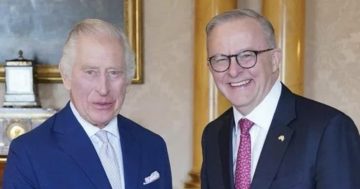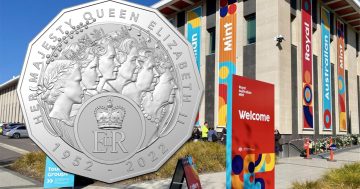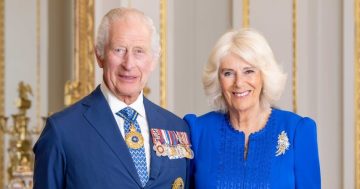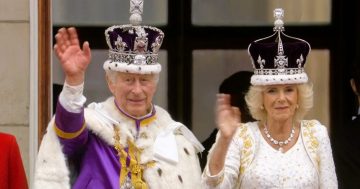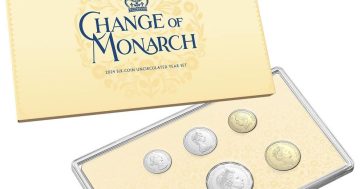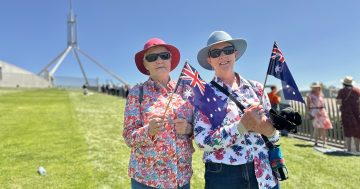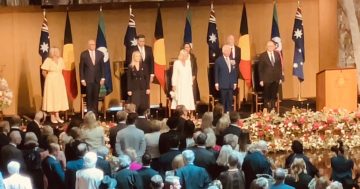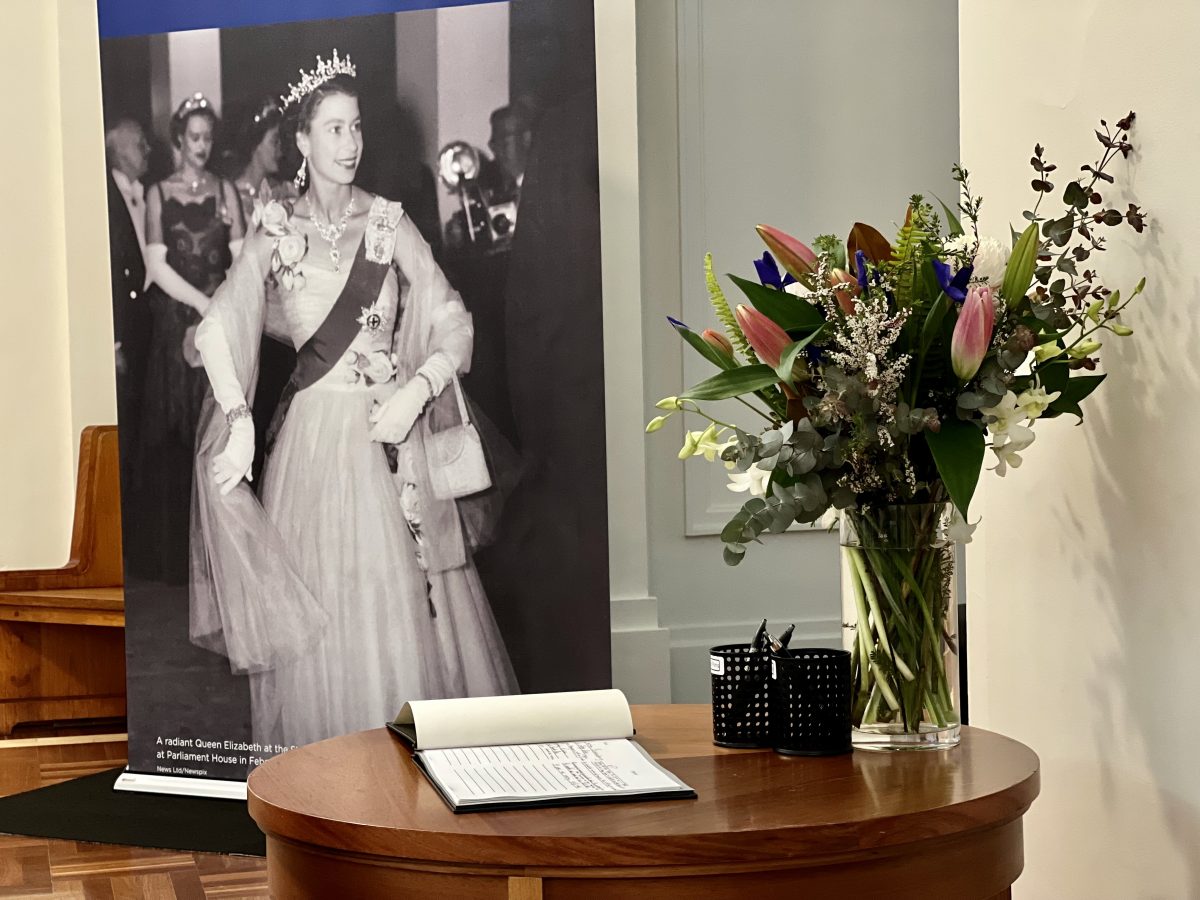
Condolence book for Queen Elizabeth II at Old Parliament House. Photo: James Coleman.
“It’s very sad. She’s been the monarch for my whole life. We were all expecting it, but it’s still very sad.”
Peter Snell sums up what Canberra is thinking. Flags were flying at half-mast today following the death of Queen Elizabeth II, our longest reigning monarch, Australia’s head of state and a woman held in the highest regard for her integrity and unwavering devotion to duty.
Books of condolence were opened up throughout Canberra’s national institutions including Parliament House, Old Parliament House and Government House, as a way for citizens to express their sympathies and memories to the Royal Family.
To mark the occasion, the National Museum of Australia pulled out of storage the car used by Her Majesty during the 1954 Royal Tour – a two-tone 1948 Daimler Landaulette. The museum purchased the six-metre long, four-tonne limousine from a private owner in 2000.
The Queen visited Canberra on 14 occasions throughout her time as monarch, from her first visit in 1954 to open the Federal Parliament to her most recent visit in 2011 as part of a national tour.
Peter originally brought his grandchildren to the museum to see the ‘Connection’ exhibition, but the sight of the regal limousine rolling into the foyer stirred memories of the time he met the Queen in 1970.
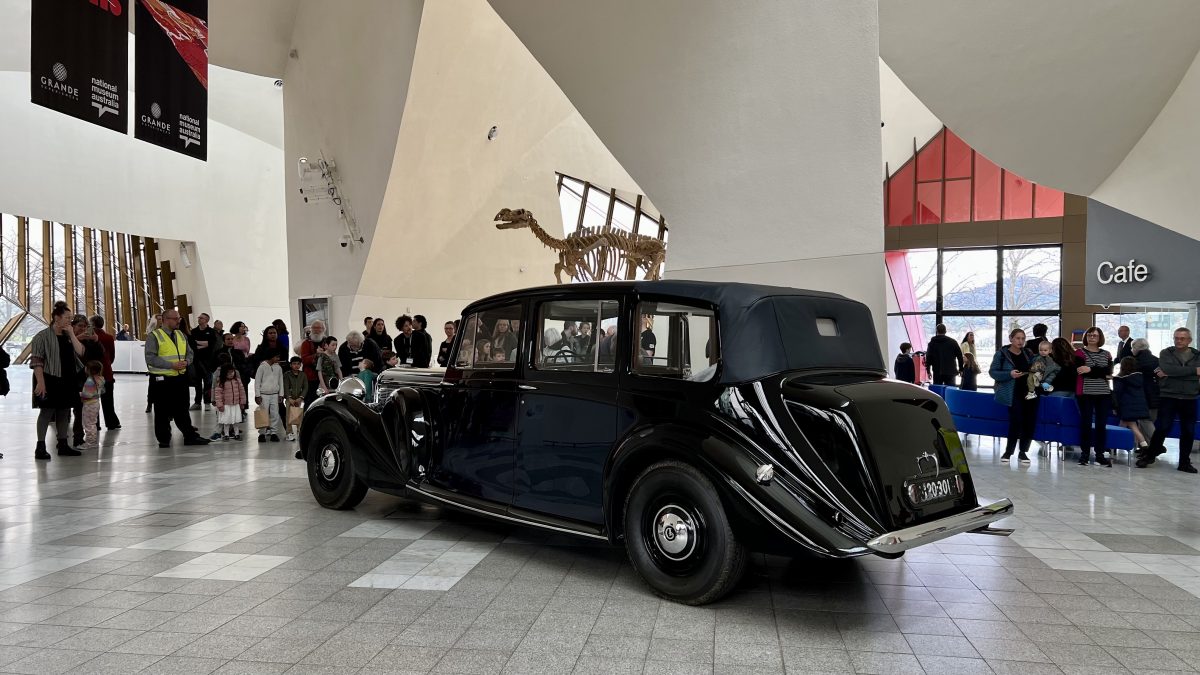
The 1948 Daimler Landaulette, was used by the Queen in her Royal Tour 1954. Photo: James Coleman.
“I came home from Vietnam in December 1969 and was awarded a military medal for bravery,” he says.
“When the Queen came to Australia the following year, I was invited to Government House in Victoria, along with my mother and two sisters.
“We were only with her for a few brief minutes, but she actually shook my hand, pinned the medal on me, and spoke to me. We had a choice to call her ‘Your Majesty’ or ‘ma’am’. I couldn’t say ‘Your Majesty’. At 22 years old, you’re pretty nervous.”
When he did speak, Peter says the Queen struck him as an easy person to talk to.
“There was nothing pretentious about her, but she was still very regal. You could see who she was. Quite an amazing person to be in front of.”
Decades earlier, in 1954, Australian artist Sir William Dargie visited the Queen five times in Buckingham Palace in London. His oil portrait of Her Majesty was also displayed alongside the Daimler in the museum.
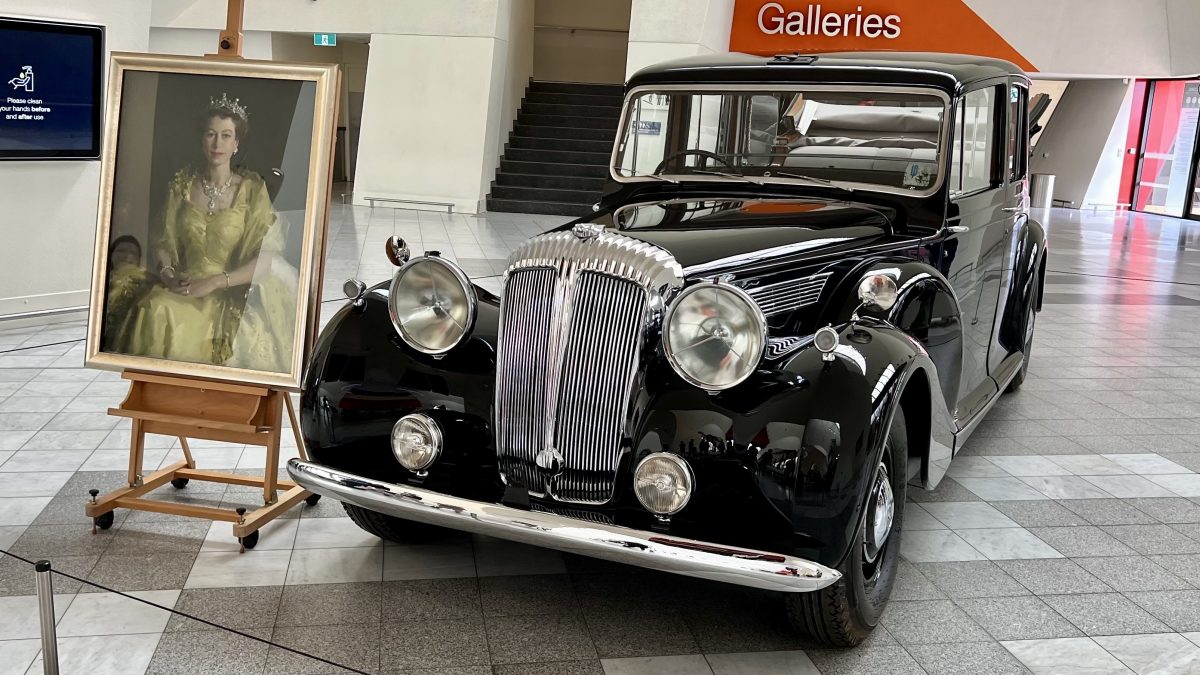
The Daimler next to Sir William Dargie’s ‘wattle’ portrait. Photo: James Coleman.
She is depicted wearing a Norman Hartnell gold tulle dress adorned with sparkling gold wattle motifs – the same outfit she wore to the first and last engagements of her 1954 tour. This was the first time a reigning monarch had set foot on Australian soil.
The Daimler is one of six originally commissioned by Prime Minister Ben Chifley for a scheduled tour of Australia by King George VI in 1949, which was cancelled at the last minute due to the King’s ill health. With the cars already paid for, two were sold to the Maharaja of Mysore in India and the remaining four joined the government fleet.
They were then refurbished to help the Queen cover the ground in her 58-day tour across all seven states and territories in 1954.
The National Museum of Australia director Dr Mathew Trinca says during this first historic 1954 tour, an estimated 70 per cent of Australians turned out to see the newly crowned young Queen.
“As the Crown passes to King Charles III, we mourn her passing and reflect on her seven decades as sovereign,” he says.
“We are grateful for her great commitment to duty and extraordinary lifetime of service.”
Glenn (last name omitted for privacy reasons) was having a coffee at the museum cafe when he saw the car roll in. He’s a retired NSW police officer and recalls serving in the Queen’s security team at the opening of the Sydney Opera House in 1973 and the following year during her next visit.
“I was stationed by the door and told that if anything untoward was to happen, I was basically to grab her and run to safety,” he says.
“She was a tiny lady but always very dignified, carried herself well, and obviously did her job throughout her whole life. That’s a life of service. She was doing it before I was born and she was doing it after I retired. You can’t say much more than that.

Inside the back of the Daimler. Photo: James Coleman.
“I’m not a royalist, but I’ve always felt a bit of an affinity. It’s the end of an era.”
Lynne Greenwood is a monarchist from Picton, NSW and happens to have been passing through the museum.
“While we’re all mourning the loss of the Queen, it is so much more important to say, ‘The Queen is dead, long live the King’,” she says.
“And we remember the wonderful system of government we have here – the reason why so many people have come from overseas.”












